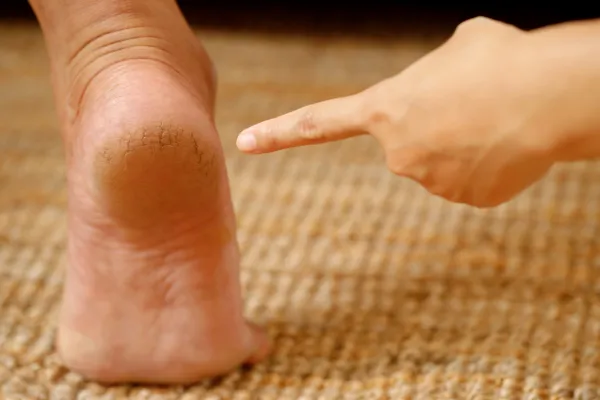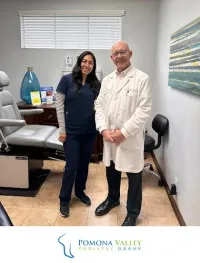
Is Cracked Heel Skin Just a Cosmetic Issue?
If you’ve ever looked down and noticed your heels looking dry, flaky, or even cracked—you’re definitely not alone. It’s easy to brush it off as “just dry skin” or a minor annoyance, especially if it doesn’t hurt (yet). But here’s something most people don’t realize: cracked heels can be more than just a cosmetic issue.
In fact, those little splits in the skin can turn into something painful, and in some cases, even dangerous—especially if you have diabetes or circulation issues.
Let’s break down what causes cracked heels, when it’s time to take them seriously, and how a podiatrist can help you heal and prevent the problem for good.
Why Do Heels Crack in the First Place?
Your heels take on a lot of pressure every day. When the skin around your heels becomes dry and thick, it loses flexibility. Then, when you stand or walk, that dry skin can start to split open, forming cracks.
Common causes of cracked heels include:
Walking barefoot or in open-back shoes
Standing for long periods on hard surfaces
Not moisturizing your feet regularly
Wearing shoes that don’t support your heel
Skin conditions like eczema or psoriasis
Cold, dry weather
If your feet tend to be dry and you ignore them, those cracks can sneak up on you fast.
More Than Just Dry Skin
Cracked heels don’t just look rough—they can get worse quickly if left untreated.
Here’s what can happen:
Pain: As the cracks deepen, it can start to hurt when you walk or stand.
Bleeding: Deep fissures can split enough to bleed.
Infections: Cracks create openings where bacteria and fungi can get in, leading to infections.
Complications for diabetics: For people with diabetes or poor circulation, even a small crack can turn into a serious problem like a foot ulcer.
What starts as something that looks like a “cosmetic” issue can actually interfere with your daily life.
When to See a Podiatrist
You should visit a podiatrist if:
Your heel cracks are deep or painful
You see redness, swelling, or signs of infection
You have diabetes and notice any new foot issues
You’ve tried home care but the cracks keep coming back
At Pomona Valley Podiatry, we often treat cracked heels with gentle debridement (removing thick skin), targeted moisturizers, and sometimes custom inserts or heel cups to reduce pressure. We’ll also look for any underlying problems that could be causing the dryness or pressure buildup.
At-Home Tips for Preventing Cracked Heels
If your heels are just starting to get dry or you want to prevent future cracks, here are some simple tips:
1. Moisturize Daily
Use a thick foot cream (not just regular lotion) after your shower or before bed. Look for ingredients like urea or lactic acid for deeper hydration.
2. Wear Supportive Shoes
Avoid walking barefoot or wearing flat sandals for long periods. A good, supportive shoe protects your heels and keeps the skin from stretching too much.
3. Use a Pumice Stone—Gently
Don’t go at your heels with a metal scraper! A gentle pumice stone can help remove thickened skin after soaking your feet.
4. Drink Water and Watch the Weather
Staying hydrated and using a humidifier during dry months can help keep your skin healthy from the inside out.
5. Check Your Feet Regularly
Especially if you have diabetes, keeping an eye on your feet can help you catch small issues before they become big problems.
Final Thoughts
Cracked heels may start out looking like a minor cosmetic problem, but they’re your body’s way of telling you something’s not quite right. Whether it’s pressure, dryness, or an underlying condition—the good news is, help is simple and effective.
At Pomona Valley Podiatry, we don’t just treat the symptoms—we help you understand why your feet are acting up and what you can do to protect them long-term.
Because healthy feet = happy steps.
Ask And His Team
Fill in the form to request a Call From Our Team
One of our team will call you for FREE and answer any questions or concerns you may have about your uncomfortable foot condition





